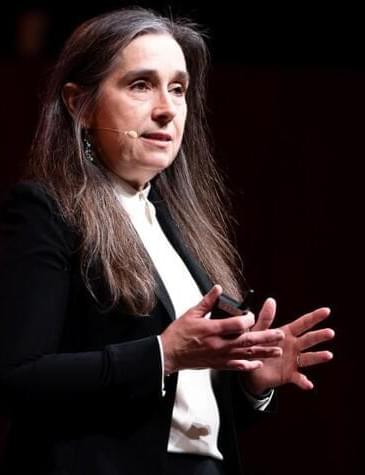In an exclusive interview with MIT Technology Review, Nadella shares his view of the platform shift for developers.
In San Francisco last week, everyone’s favorite surprise visitor was Microsoft CEO Satya Nadella.




Like “Avengers” director Joe Russo, I’m becoming increasingly convinced that fully AI-generated movies and TV shows will be possible within our lifetimes.
A host of AI unveilings over the past few months, in particular OpenAI’s ultra-realistic-sounding text-to-speech engine, have given glimpses into this brave new frontier. But Meta’s announcement today put our AI-generated content future into especially sharp relief — for me at least.
Meta his morning debuted Emu Video, an evolution of the tech giant’s image generation tool, Emu. Given a caption (e.g. “A dog running across a grassy knoll”), image or a photo paired with a description, Emu Video can generate a four-second-long animated clip.

It was inevitable. Amazon, which got its start selling books, is getting into the car business.
The e-commerce giant along with new partner Hyundai announced Thursday at the 2023 LA Auto Show that it will start selling vehicles on its website in the second half of 2024. Hyundai vehicles will be the first vehicles sold on Amazon.com’s U.S. store with other brands following later in the year.
The Amazon car sales section will allow customers to shop for vehicles in their area based on a range of preferences, including model, trim, color, and features, choose their preferred car, and then check out online with their chosen payment and financing options. Customers will be able to buy a vehicle online and then pick it up or have it delivered by their local dealership, according to Amazon.

The devices demonstrated clinical-grade accuracy and introduced novel functionalities not seen in prior research or clinical care.
Northwestern University.
Furthering the scope of such examinations, a team of researchers at Northwestern University (NU) is now presenting novel wearable technology much more advanced than the intermittent measures made during periodic medical examinations.

Cerebral small vessel disease is a significant cause of aging-related mental decline and accounts for almost half of all dementia cases globally.
Sudok1/iStock.
The research, published in the journal Stem Cell Reports, also suggests a possible drug target to prevent or treat the condition known as cerebral small vessel disease (SVD).

This is almost like endowing a printer with a set of eyes and a brain, where the eyes observe what is being printed, and then the brain of the machine directs it as to what should be printed next.
Moritz Hocher.
Traditional systems use nozzles to deposit tiny drops of resin, smoothed over with a scraper or roller and then curved with UV light. However, this smoothing limits the materials that could be used since slow-curing resins could be squished or smeared.

ChargePoint’s Express Plus Power Link 2000 DC charging system offers charging speed twice as fast as Tesla’s V3 Supercharger.
Mercedes Benz.
The initiative is part of Mercedes-Benz HPC’s first Charging Hub in North America, located at Mercedes-Benz USA Headquarters in Sandy Springs, Georgia. The 500 kW capacity, serviced by ChargePoint’s Express Plus Power Link 2000 DC charging system, makes it twice as fast as Tesla’s V3 Supercharger.
While more than 5k exoplanets were identified, the count of planets within the diameter varies between 1.5 to two times the size of Earth, which is lower than anticipated.
Scientists have noticed a ‘size gap’ among exoplanets, specifically between 1.5 to two times the size of Earth. Fascinated, scientists are striving to learn the cause of this phenomenon.